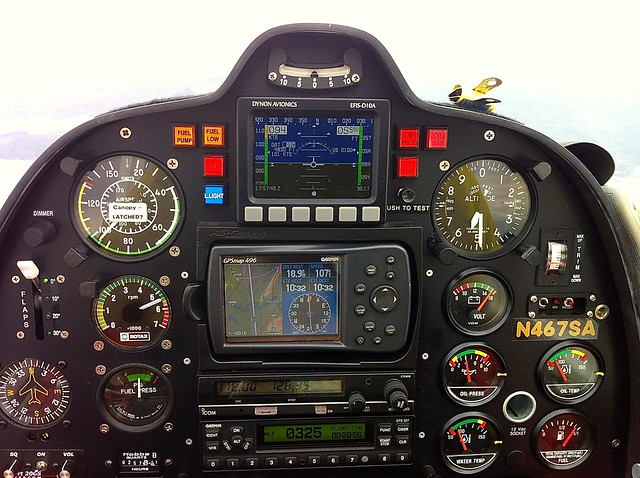Prior to taking the runway, especially an unfamiliar runway or short runway/high DA, basically anything limiting the takeoff, brief takeoff expected roll distance, runway length, go/no-go stop point down the runway, and any obstacles or good places to go when the fan quits, if I have it. At a familiar airport, this is just in my head. I'll get more formal with it the more limitations I'm looking down the barrel of a gun at.
Rolling onto the runway, final instrument check, DG matches runway heading, lights on if any were turned off (With the latest "guidance", if it won't cause any safety issues, I'm already taxiing with everything lit anymore. It used to be the strobes were "to go" on the checklist, but often not anymore...), confirm transponder ALT (also nearly useless with current guidance that it should be operating at all times, even during ground movement, unless asked to turn it off), and line up.
Quick but forceful look at every gauge and control, starting from right to left. Engine instruments must be green over there on the right or the power doesn't come up. Flow all the way across, checking everything. Usually right here the takeoff clearance is given if it's a "line up and wait", or it was given prior to taxing onto the runway. Either way, final mental confirmation of takeoff clearance, and Set clock hands to departure time here also at far left / bottom of panel.
Throttle up. Hand stays behind but not grabbing throttle, guarding it forward, and thumb assures the carb heat is off. Mixture also goes forward at this point if not operating at home, otherwise it's already set.
Look to engine quadrant for all green, with focus on MP, RPM, oil pressure and oil temp. Can also catch a last glance at fuel load and ammeter here.
Airspeed indicator now. Alive. Wait for 55 and rotate. If something happens before 55, abort on the runway. Full braking and throttle closed.
Airplane will fly off immediately with the STOL kit in any flap configuration below 40 degrees at 55 knots, so pitch for Vx or Vy (or if IMC, half a bar or a full bar on the AI which usually gets it damn close to either one), and evil eye the VSI. If performing a max STOL takeoff, one can pitch harder and sooner, and then work on milking the flaps out to speed up to Vx or Vy.
Altitude. Once we've climbed through the safe return altitude, another look at engine instruments and if possible and not at high DA, time to get the prop back. Vernier it back to 2450 and continue the climb. Watch both RPM and oil pressure as its pulled back. Also make mental note of EGT at this time, both making sure it's not something outrageous and also for knowing where to lean to during the climb.
Checklist from there. That's where my eyeballs and brain usually go through the process, with occasional interruptions from ATC "contact departure", and a flip of the already set flip flop on Comm 1 and a glance at the altimeter for the altitude for the check in.



